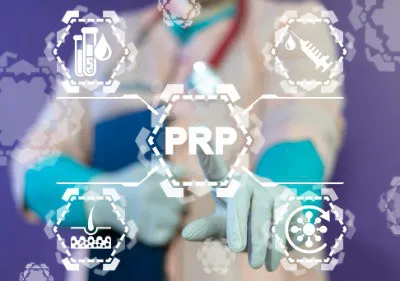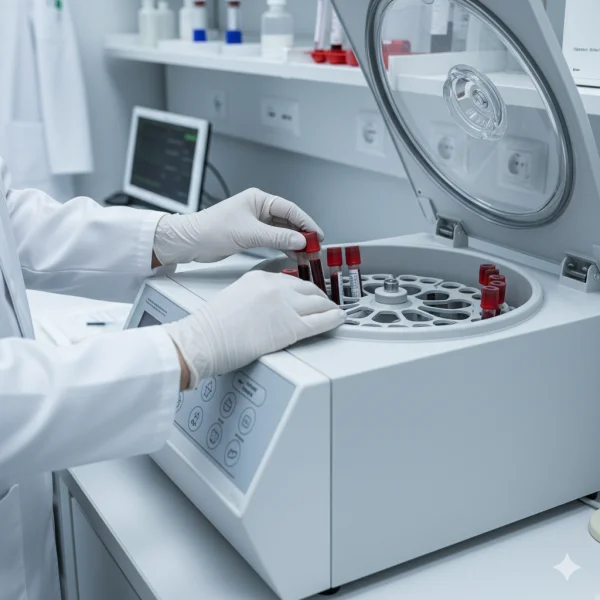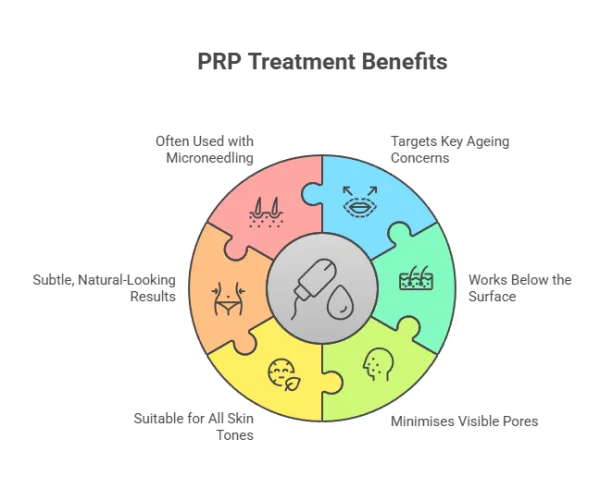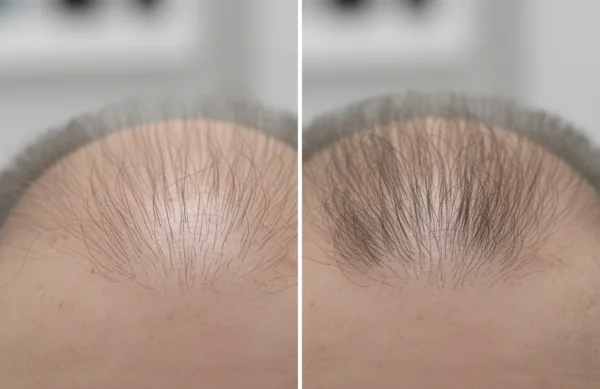You catch yourself in the mirror and notice it again: the faint lines creeping across your forehead, the way your skin has lost some of its glow, or the thinning patch near your parting that wasn't there last year. It is subtle but persistent, and no cream, supplement, or serum seems to make a real difference. The quiet mismatch between how you feel inside and what your skin or hair reflects back can chip away at confidence in ways that feel more personal than you expected.
And here is the frustrating part: so many treatments promise miracles but often involve chemicals, surgery, or downtime you simply do not have the capacity for. You want something credible, safe, and rooted in real science. That is where Platelet-Rich Plasma therapy steps in. Derived from your own blood, PRP is packed with growth factors that trigger natural regeneration. Instead of masking problems, it nudges your body to repair, restore, and renew at a cellular level. That versatility means it is being used not only for skin and hair but also for scars, pain management, and even intimate wellness.
This guide dives into what PRP can treat, who it works best for, and where it may not be the right fit. Think of it as a practical, clear-eyed look at what this much-discussed therapy really offers - beyond the headlines and hype.
So, what exactly makes PRP such a versatile treatment?
Our Preferred Partner - Cellenis PRP
Not all PRP systems are created equal — and the quality of preparation makes a big difference to outcomes. That’s why many leading clinics choose Cellenis® PRP, a clinically validated system designed to deliver highly concentrated, pure platelet-rich plasma every time. By using a closed, sterile kit and advanced centrifugation, Cellenis® ensures consistency, safety, and optimal platelet yield — the growth factors your skin, hair, or tissue rely on for regeneration. Whether the goal is brighter skin, fuller hair, or faster recovery, Cellenis® PRP offers practitioners and patients confidence in both the science and the results.
What Is PRP Therapy - And Why Is It So Versatile
In the ever-evolving world of regenerative medicine and aesthetic wellness, Platelet-Rich Plasma (PRP) therapy has become a buzzword - but its staying power lies in its science. Here’s what makes PRP so widely applicable across medical and cosmetic treatments.
NICE guidance confirms that platelet-rich plasma injections are generally safe but notes that evidence for efficacy remains limited.
A Regenerative Treatment That Works With Your Body
PRP therapy, a versatile and adaptable regenerative treatment, uses your body’s blood to support healing, regeneration, and rejuvenation, making it a natural and effective choice.
- How it’s made: A small amount of your blood is drawn and spun in a centrifuge to isolate the platelet-rich layer - this plasma contains high concentrations of growth factors that stimulate repair.
- What it contains: PRP is rich in platelets, plasma proteins, and over 30 bioactive growth factors - these signal your body to regenerate tissue, boost collagen, and improve circulation.
- PRP therapy, being safe and biocompatible, is a reassuring choice. Since PRP comes from your blood, there’s virtually no allergic reaction or rejection risk.
- Delivery options: It can be injected directly into the skin, scalp, joints or even applied topically after microneedling, depending on the treatment goal.
- Minimal downtime: PRP is non-surgical and usually requires little to no recovery time, making it ideal for busy lifestyles.
Why PRP Is Used in So Many Fields
Its versatility lies in its ability to stimulate natural repair across various tissues - from skin to muscle to hair follicles.
- PRP is widely used in aesthetics for skin rejuvenation, acne scarring, fine lines, and hair restoration.
- In orthopaedics and sports medicine, it’s used to aid recovery from tendon injuries, joint pain, and muscle strains.
- PRP can accelerate healing in wound care in chronic ulcers, post-operative incisions, and scar revision.
- In intimate wellness: PRP therapy is emerging as a supportive treatment for vaginal rejuvenation and erectile function.
PRP therapy is not just a trend - it’s a clinically supported, body-friendly treatment that enhances healing and regeneration in multiple ways. Its versatility is why it's now offered in advanced aesthetic clinics and orthopaedic centres.
Discover The Transformative Power Of PRP For Skin Rejuvenation And Anti-Ageing
Our skin naturally loses collagen, elasticity, and hydration as we age, leading to fine lines, dullness, and uneven texture. Platelet-Rich Plasma (PRP) therapy offers a regenerative, non-surgical way to reverse these signs by using your body’s healing mechanisms.
The MHRA monitors safety profiles of PRP and related regenerative therapies, with reports collected via the Yellow Card Scheme, underscoring ongoing vigilance in patient safety within the UK
A Natural Approach to Smoother, Firmer, More Radiant Skin
PRP for skin rejuvenation taps into your body’s innate ability to regenerate tissue, stimulating collagen and elastin to restore a youthful glow.
- Targets key ageing concerns: PRP helps reduce fine lines, boost hydration, improve skin tone, and tighten areas affected by sagging - especially around the eyes, mouth, jawline, and neck.
- Works below the surface: PRP growth factors activate fibroblasts in the dermis to produce new collagen and elastin, improving structural support and skin firmness from within.
- Minimises visible pores and rough texture: By enhancing cellular turnover and tissue renewal, PRP refines the skin’s surface and smooths uneven areas over time.
- Suitable for all skin tones: Unlike some energy-based treatments, PRP doesn’t rely on heat or light, making it a safe option across a broad range of skin types.
- Subtle, natural-looking results: You won’t leave with a “done” look - just fresher, healthier skin that improves gradually over 4–12 weeks.
- Often used with microneedling: When combined, PRP and microneedling deliver synergistic results - deeper penetration, accelerated healing, and amplified collagen synthesis.
What to Expect from a Treatment
- Procedure: After a small blood draw, your PRP is separated using centrifugation and injected or applied via microneedling.
- Sensation and downtime: Most patients describe mild redness and sensitivity for 24–72 hours post-treatment, typically no longer.
- Frequency: 3 sessions spaced 4–6 weeks apart is standard, with maintenance treatments every 6–12 months.
PRP For Acne Scars And Pigmentation
You're not alone if you’re dealing with stubborn acne scars or uneven pigmentation. These common skin concerns can be challenging to treat, but Platelet-Rich Plasma (PRP) therapy is emerging as a powerful, regenerative, natural and clinically backed option.
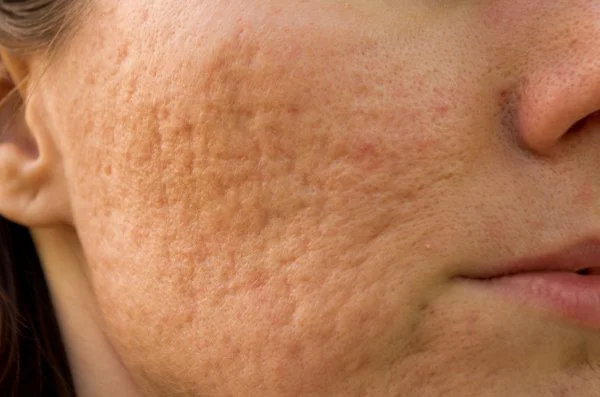
Rebuilding Skin from Within - Not Just Covering It Up
PRP supports tissue remodelling and pigment balance by stimulating your body’s repair mechanisms.
- Fades post-acne marks and pigmentation: PRP contains growth factors that can regulate melanocyte activity, helping to even out discolouration caused by inflammation or trauma.
- Smooths textural irregularities: By encouraging collagen and elastin production, PRP softens indented or atrophic acne scars over time, improving skin texture and firmness.
- Reduces inflammation and promotes healing: Active acne can leave lingering redness and uneven tone behind. PRP’s anti-inflammatory effects help calm the skin and support faster recovery.
- Delivers best results when combined: PRP is often paired with microneedling, fractional laser, or chemical peels to enhance absorption and accelerate results, particularly for deeper scars.
- Gentle on skin tones prone to post-inflammatory pigmentation: Because it works without heat or harsh chemicals, PRP is well suited for patients with medium to darker skin tones, where other treatments may carry a higher risk of hyperpigmentation.
What to Expect from PRP for Acne Scarring
- Treatment approach: PRP is injected into scarred areas or applied post-procedure (e.g. after microneedling) to maximise skin renewal.
- Treatment schedule: Most patients see optimal results after 3–4 sessions spaced 4–6 weeks apart, with maintenance as needed.
- Downtime: Typically, minimal to mild redness and swelling can occur for 1–3 days, depending on the delivery method.
Unlike topical products or harsh resurfacing procedures, PRP works beneath the surface to rebuild smoother, clearer, more balanced skin from the inside out. It’s especially effective for those seeking natural-looking improvement without extensive downtime.
PRP For Hair Loss And Thinning Hair
Hair thinning is one of the most emotionally charged aesthetic concerns - yet it affects both men and women more commonly than you might think. Platelet-Rich Plasma (PRP) therapy has become a sought-after, non-surgical solution that uses your body’s regenerative power to stimulate hair growth and slow shedding.
According to Alopecia Uk, male and female pattern hair loss affects approximately 1 in every 4,000 of the UK adult population, with early intervention linked to improved outcomes as supported by PRP therapy’s mechanism of follicular stimulation.
Boosting Hair Growth Naturally - No Surgery or Harsh Chemicals
PRP supports follicle health, extends the hair growth cycle, and helps reactivate dormant follicles.
- Ideal for early-stage hair loss: PRP works best for those noticing gradual thinning or patchy hair loss, particularly androgenetic alopecia (male and female pattern baldness).
- Stimulates growth factors in the scalp: Injecting PRP into the scalp delivers a concentrated dose of bioactive proteins directly to the follicles, encouraging hair regrowth and thickening.
- Reduces shedding and improves density: Many patients report less daily hair loss and improved volume over time, especially in the crown and hairline.
- Minimal discomfort, no downtime: The procedure involves a series of small injections, typically well tolerated with numbing cream. You can resume normal activities the same day.
- Drug-free, low-risk approach: Unlike medications like minoxidil or finasteride, PRP is free from pharmaceutical ingredients and uses your body’s plasma, minimising side effects.
- It can be combined with other treatments: PRP complements topical and oral therapies and may enhance results from hair transplant surgery or LED therapy.
What to Expect During Treatment
- Initial plan: Most providers recommend three sessions, spaced 4–6 weeks apart, followed by maintenance every 6–12 months.
- When results appear: Improvements typically begin around the 3-month mark, with continued gains up to 12 months.
- Is it for everyone?PRP is less effective for completely bald areas or where follicles are no longer active. A consultation helps assess candidacy.
PRP offers a promising option for those seeking a regenerative, minimally invasive solution to hair loss. It’s especially appealing for patients who prefer a natural, evidence-backed approach to restoring hair health and confidence.
PRP For Sexual Health And Intimate Wellness
Sexual health is a vital but often overlooked aspect of overall well-being. Whether due to ageing, childbirth, hormonal changes, or medical conditions, many people experience intimate concerns that impact confidence and quality of life. Platelet-Rich Plasma (PRP) therapy offers a non-surgical, regenerative approach to enhancing intimate wellness for both women and men.
Supporting Natural Function, Sensitivity and Confidence
PRP works by stimulating tissue repair, improving blood flow, and enhancing sensitivity in intimate areas.
- Women’s health applications: PRP is used in treatments such as the “O-Shot” to help with vaginal dryness, decreased sensitivity, mild stress urinary incontinence, and post-childbirth recovery. It encourages the production of new collagen and blood vessels, which supports tissue repair and responsiveness.
- Men’s health applications: Known as the “P-Shot”, PRP is injected into specific areas of the penis to improve erectile function, sensitivity, and circulation potentially. It’s often considered for mild to moderate erectile dysfunction or as a complementary therapy post-surgery.
- Improved sensation and satisfaction: Many patients report enhanced intimacy due to increased sensitivity and improved tissue hydration, especially following hormonal shifts such as menopause or andropause.
- Supports healing post-surgery or trauma: PRP can aid recovery following certain pelvic surgeries or injuries by accelerating tissue regeneration and reducing inflammation.
- Minimally invasive with low risk: PRP uses your blood, so it carries minimal risk of allergic reaction or rejection. The treatment is performed under local anaesthesia, with little to no downtime.
What to Expect
- The process: A small amount of blood is drawn and processed, and the PRP is injected into specific sites depending on the concern.
- Treatment plan: Most patients benefit from 1–3 sessions, with maintenance once or twice yearly.
- Results timeline: Effects may begin within weeks and continue to improve over several months as tissue regenerates.
Whether you want to restore function, comfort, or confidence in your intimate health, PRP therapy offers a safe and natural option grounded in regenerative science. It’s discreet, evidence-informed, and increasingly recognised in functional wellness.
PRP For Wound Healing And Scarring
Whether from surgery, injury, or skin conditions like acne, scars can have a lasting impact, physically and emotionally. Platelet-Rich Plasma (PRP) therapy is increasingly used to support wound healing and improve the appearance of scars by harnessing the body’s regenerative power.
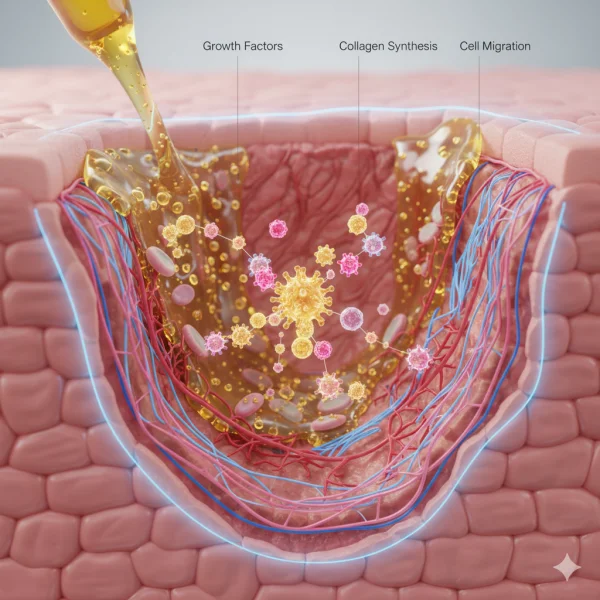
Encouraging Faster Healing and Smoother, Healthier Skin
PRP helps accelerate tissue repair while minimising the chance of long-term scarring.
- Stimulates the body’s natural healing cascade: PRP is rich in growth factors that promote cell proliferation, tissue remodelling, and new blood vessel formation - key processes in skin repair.
- Improves the appearance of post-surgical and trauma scars: Injecting PRP into or around a healing wound can reduce scar thickness, improve texture, and promote more even pigmentation as the skin regenerates.
- Supports chronic wound recovery: For conditions such as diabetic ulcers or slow-healing abrasions, PRP can improve circulation and help close wounds more efficiently, especially when conventional methods have plateaued.
- Reduces inflammation and risk of infection: By enhancing immune response and tissue oxygenation, PRP may lower the likelihood of complications during wound healing.
- Safe, autologous therapy: Because PRP is derived from your blood, it’s well tolerated, even in sensitive or damaged skin areas.
What to Expect from PRP for Scarring
- Treatment approach: PRP may be injected directly into scar tissue or applied topically in combination with microneedling or laser resurfacing to aid penetration.
- Number of sessions: 3–4 treatments are typically recommended, spaced 4–6 weeks apart. More may be required for older or raised scars.
- Downtime: Minimal - most patients experience mild swelling or redness for a few days. When used post-surgery, it’s integrated seamlessly into recovery plans.
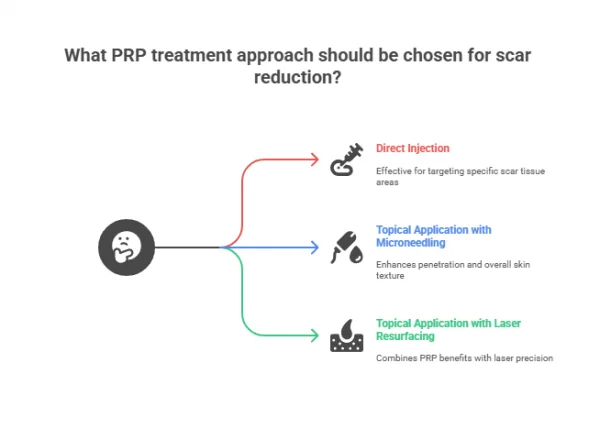
PRP offers a promising, minimally invasive way to improve wound healing and soften the visual impact of scarring. It’s a powerful option for those seeking natural results without harsh chemicals or invasive procedures.
Can PRP Be Used With Other Treatments?
One of the most compelling aspects of Platelet-Rich Plasma (PRP) therapy is its versatility - not just as a standalone treatment, but as a powerful adjunct to a range of aesthetic and medical procedures. PRP can enhance outcomes, speed healing, and reduce downtime when paired strategically.
Combining Therapies for Enhanced Results
PRP complements many skin and hair treatments by boosting regeneration and improving recovery.
- Microneedling + PRP: This is one of the most popular combinations. Microneedling creates controlled micro-injuries in the skin, allowing PRP to penetrate deeply. The result? Accelerated healing, smoother skin texture, and increased collagen production.
- Laser treatments + PRP: After fractional or ablative laser resurfacing, PRP can significantly reduce redness and swelling while promoting faster tissue recovery and improved skin tone.
- PRP + dermal fillers: Used together, PRP and fillers create a dual approach - fillers restore volume instantly, while PRP stimulates collagen over time for longer-lasting results and improved skin quality.
- Hair restoration therapies + PRP: Combining PRP with topical treatments like minoxidil or red light therapy can support follicle health, reduce shedding, and enhance regrowth, especially in the early stages of hair loss.
- PRP post-surgery or post-injection: For patients undergoing surgical or injectable treatments (such as fat transfer or thread lifts), PRP can support healing, minimise inflammation, and improve scar outcomes.
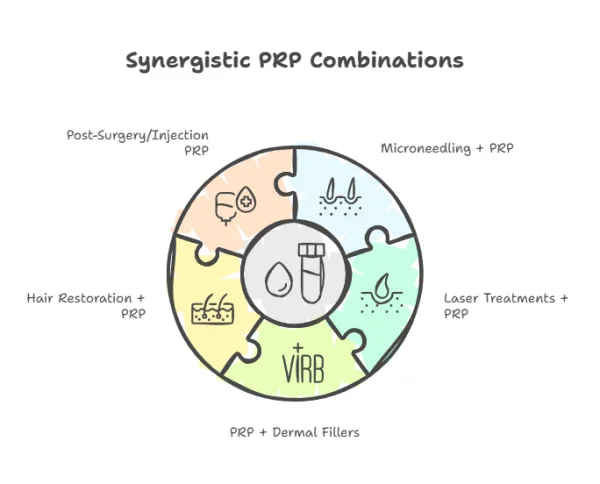
Why Pair PRP with Other Treatments?
- Synergistic effects: PRP amplifies the effectiveness of many procedures by biologically encouraging tissue renewal at a cellular level.
- Reduced recovery time: It shortens post-procedure healing periods, helping patients return to everyday life more quickly.
- Natural enhancement: PRP enhances results from other treatments without introducing synthetic ingredients or increasing risk.
- Personalised care: Clinics can customise treatment plans by layering PRP with therapies based on your goals and skin condition.
When it comes to maximising treatment outcomes, PRP is more than just a trend - it’s a regenerative tool that works in harmony with many modern aesthetic procedures. If you’re considering a treatment plan, exploring how PRP might enhance it is well worth the conversation.
What Can’t PRP Treat? (And Who Should Avoid It?)
PRP therapy has become a popular choice for skin, hair, joint, and intimate health - but like all treatments, it has limitations. Knowing when PRP may not be appropriate is just as important as understanding when it works best.
Understanding the Limits of PRP
While PRP is a regenerative powerhouse, it's not a cure-all or right for everyone.
- It can’t replace surgery or structural correction: PRP may support healing, but it can’t fix advanced joint damage, herniated discs, or deeply atrophic scars that require surgical intervention.
- Unsuitable for entirely inactive hair follicles: PRP is unlikely to stimulate new growth in areas of complete baldness where follicles are no longer viable. Hair transplant surgery may be more appropriate.
- Not ideal for severe skin ageing: While PRP boosts collagen, it has a limited effect on deep wrinkles or severe sagging. In such cases, dermal fillers, thread lifts, or surgical facelifts may deliver better results.
- Not a treatment for cancer or systemic disease: PRP does not treat underlying medical conditions such as autoimmune disorders, chronic infections, or metabolic disease.
Who Should Avoid PRP?
Medical and safety considerations can make PRP inappropriate for specific individuals.
- Those with blood or platelet disorders: Conditions like thrombocytopenia, haemophilia, or platelet dysfunction may interfere with PRP’s effectiveness or safety.
- People on anticoagulant or corticosteroid medication can impair clotting or healing responses, making PRP less effective or increasing the risk.
- Active infections or inflammation at the treatment site: Any local infection should be treated before PRP is considered, to avoid spreading bacteria or delaying healing.
- Pregnant or breastfeeding individuals: While PRP is autologous, its use during pregnancy is generally avoided as a precaution due to a lack of robust safety data.
- Individuals with certain cancers: Because PRP stimulates growth factors, it is generally avoided in people with active or recent cancers unless advised otherwise by a medical professional.
PRP is a versatile and well-tolerated treatment, but it's not suitable for everyone and won’t address every concern. A thorough consultation with a qualified practitioner ensures you receive the safest and most effective care tailored to your needs.
Final Thoughts: Is PRP Right For You?
You’ve explored how Platelet-Rich Plasma (PRP) can help with everything from skin rejuvenation to hair regrowth and intimate wellness, but the big question remains: is it the right option for you? While PRP is a powerful tool in regenerative aesthetics, it’s not a one-size-fits-all solution. Here's how to assess your suitability.
Deciding If PRP Aligns With Your Goals and Health Profile
PRP can deliver meaningful results, but setting realistic expectations and understanding when it works best is essential.
- You’re seeking natural, gradual improvement: PRP stimulates your body’s healing processes. Results are initially subtle and build over time, offering a refreshed, not “done” look.
- You want to minimise synthetic or surgical interventions: If you’re not ready for dermal fillers or surgery, PRP provides a biologically based alternative that integrates seamlessly with your body.
- You’re generally in good health. Ideal candidates are non-smokers without bleeding disorders or chronic infections. Being well-hydrated and following a healthy lifestyle also improves outcomes.
- You’re open to a series of treatments: PRP usually involves a course of sessions, not a single visit. Commitment to the treatment plan is key for the best results.
- You value preventative care: Many younger clients use PRP to maintain skin and hair health before concerns become advanced - a smart move in the long run.
When You Might Want to Consider Other Options
- Your concern is structural, not cellular: Deep wrinkles, sagging, or bone loss may be better treated with fillers, threads, or surgical lifting.
- You have a medical condition that affects healing: If you’re on anticoagulants, undergoing chemotherapy, or have an autoimmune disease, PRP may not be advised.
- You need fast, dramatic results: PRP is a slow-burner. Combination treatments or other modalities may be more appropriate if you're after instant volume or dramatic lifting.
PRP therapy is a highly adaptable, safe, and natural solution for many aesthetic and wellness concerns - but it’s not for everyone. A tailored consultation is essential to determine whether it’s the right investment for your needs, health, and goals.
Conclusion
Whether you're hoping to soften fine lines, stimulate hair growth, or simply restore a fresher sense of self, PRP therapy offers a modern, medically-backed approach, without relying on harsh chemicals or invasive procedures. Its ability to work harmoniously with your body makes it a uniquely natural path to renewal.
What’s clear is that PRP isn’t a one-size-fits-all miracle, but for the right candidates, it can deliver subtle yet meaningful changes that build confidence over time. The key lies in understanding what it can treat, what it can’t, and where it fits within your personal goals.
If you’re curious how PRP might support your skin, hair, or wellbeing, the next best step is speaking with a qualified aesthetic practitioner. A tailored consultation can help you weigh your options, understand the science behind it, and feel confident.
Your PRP Questions
Real Questions from Real People — Answered
Straightforward answers to the questions people like you are asking right now about PRP.

Cost of PRP treatment for hair?
Please give the cost and how many sessions needed to prevent complete hair loss and new hair
Hair loss.
Dear reader My name is Mo I'm interested to have prp treatment in your clinic and I have some questions How many ml of prp i will get injured ? Did you analyse prp There any other services after the treatment is done Thank you
To view all the PRP questions, please click here.
Or click here to ask your own question.
Find A Verified Clinic
Trusted PRP Experts, Local to You
Easily connect with qualified, verified professionals for safe, reliable treatment.


Hoole Medispa
51 Hoole Road, Hoole, Chester, CH2 3NH
Welcome to Hoole Spa and Aesthetics situated in the beautiful Grade II listed building in the suburbs of Hoole, Chester.
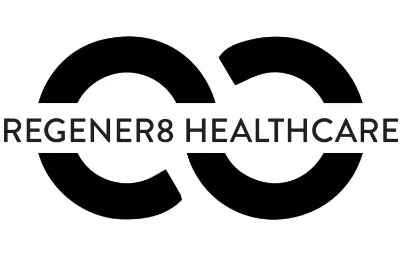
Regener8 Healthcare
42 Hewell Road, Barnt Green, Birmingham, B45 8NF
Regener8 Healthcare brings together a team of highly qualified specialists, who are all passionate about aesthetics, longevity and wellness treatments.
To find a PRP clinic near you, please click here.

